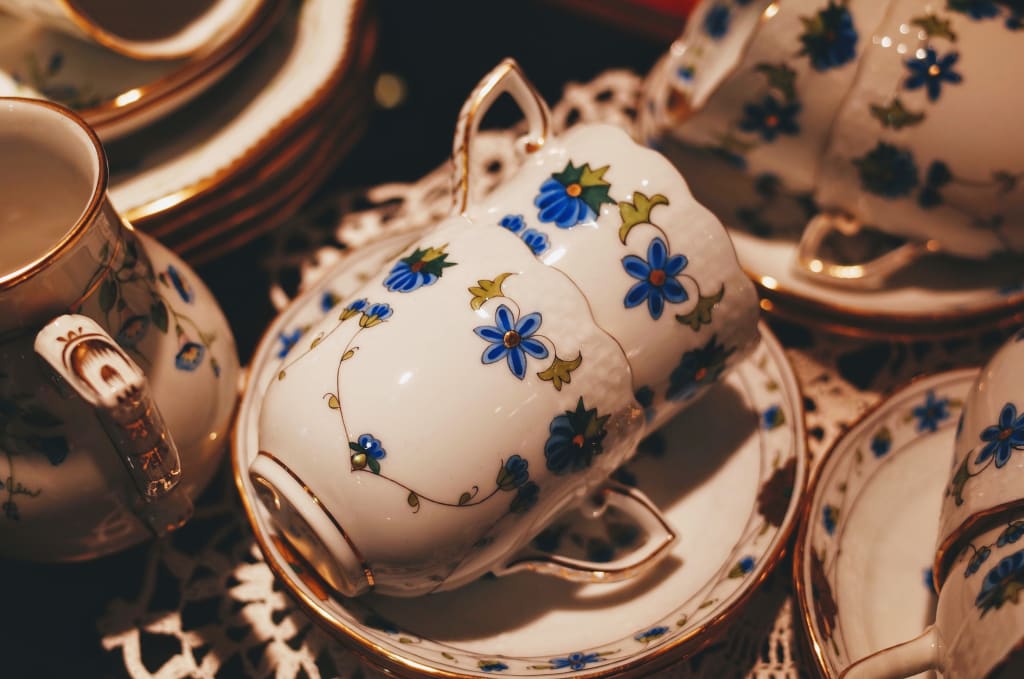Why Porcelain Is So Expensive?
The Labor-Intensive and Rare Materials that Make Up the Cost of Fine Ceramics

Creating ceramics involves several labor-intensive processes, such as sculpting, glazing, and firing. Handmade ceramic dinnerware can be expensive, but porcelain dinnerware is even pricier. The cost of porcelain varies, but some dishware can cost over $400. Porcelain is the most commonly used material to make toilets because it is durable, non-porous, long-lasting, and easy to clean. Compared to other ceramics, porcelain has a distinct white color and some types are translucent. The clay used for porcelain contains a high percentage of kaolin, which is found all over the world but large, high-quality deposits are rare.
Porcelain, also known as china, was first created in China, but today it is produced all over the world. The Arita Porcelain Lab in Japan has been making porcelain for over 200 years. Porcelain clay recipes vary, but they typically contain materials like quartz, feldspar, and ball clay. Each material changes the clay's properties; for example, ball clay makes it more malleable, and feldspar helps it become glass-like when fired. The highest quality translucent clays need to be free from impurities and generally cost more than other ceramic clays. Even experienced potters find working with porcelain challenging. This is why many workshops have an artisan for each specific step in the process.
Compared to other ceramics, porcelain clay is challenging to mold by hand and is more prone to cracks when drying. To produce more uniform pieces, many workshops use molds for complex shapes. Glazing is also a difficult step in making porcelain. It seals the clay and adds color and patterns, but it also contributes to the high cost of ceramics. At many workshops, each design is delicately painted by hand. Temperature is another challenge in making porcelain. Porcelain is fired at a higher temperature than most other ceramics, usually around 1300 degrees Celsius. This workshop fires its pieces three times, a lengthy but crucial process. Loading the kiln is a daunting task, but it must be done carefully to avoid destroying any pieces inside.
Fortunately, the firing process was successful and now the final design is taking form. The cost of porcelain varies depending on the size and intricacy of the design. While a basic rice bowl may cost around seven dollars, the workshop's most expensive platter could cost several thousand dollars. Although blue and white designs are a traditional look for porcelain, the arita porcelain lab is attempting to create more contemporary designs to keep the ancient craft relevant in modern homes.
Porcelain has a rich history, dating back to ancient China, where it was first created. It was highly prized by the wealthy and elite, and its beauty and durability made it a popular choice for fine dinnerware and decorative objects. Today, porcelain is still regarded as a luxurious and high-end material, but it is also widely used for functional items such as sinks, toilets, and tiles.
The process of creating porcelain is a labor-intensive one, involving many skilled artisans and numerous steps. The high cost of porcelain reflects the time and effort required to create it, as well as the rarity of the materials used. High-quality kaolin, the primary ingredient in porcelain, is found in only a few places around the world, and other materials such as feldspar and ball clay must be carefully selected and blended to achieve the desired properties in the clay.
Once the clay is mixed and shaped into the desired form, it must be fired at extremely high temperatures to create the glass-like surface that is characteristic of porcelain. This requires specialized kilns and careful attention to temperature and timing to avoid cracking or other defects. Finally, the pieces must be glazed and fired again, adding another layer of complexity to the process.
Despite its high cost and difficulty to produce, porcelain remains a popular choice for fine dinnerware, decorative objects, and even artistic works. Some contemporary artists are exploring new techniques and approaches to porcelain, pushing the boundaries of what is possible with this ancient material. From sleek, modern designs to intricate, traditional patterns, porcelain continues to inspire and captivate people around the world.
In addition to its aesthetic appeal, porcelain also has many practical advantages. Its durability and non-porous nature make it resistant to stains, scratches, and bacteria, making it a hygienic and long-lasting choice for kitchen and bathroom fixtures. Its translucency also makes it an ideal material for lighting fixtures and other decorative objects that can be illuminated from within.
Overall, the high cost and complex production process of porcelain are justified by its beauty, durability, and practical benefits. While it may not be accessible to everyone, the artistry and craftsmanship involved in its creation are a testament to the enduring appeal of this remarkable material.
About the Creator
Bob Oliver
Bob is a versatile writer & communicator passionate about exploring diverse topics & perspectives. I have written for various media outlets. And I believes in using words to inspire positive change. #writing #communication #passion
Enjoyed the story? Support the Creator.
Subscribe for free to receive all their stories in your feed. You could also pledge your support or give them a one-off tip, letting them know you appreciate their work.






Comments
There are no comments for this story
Be the first to respond and start the conversation.